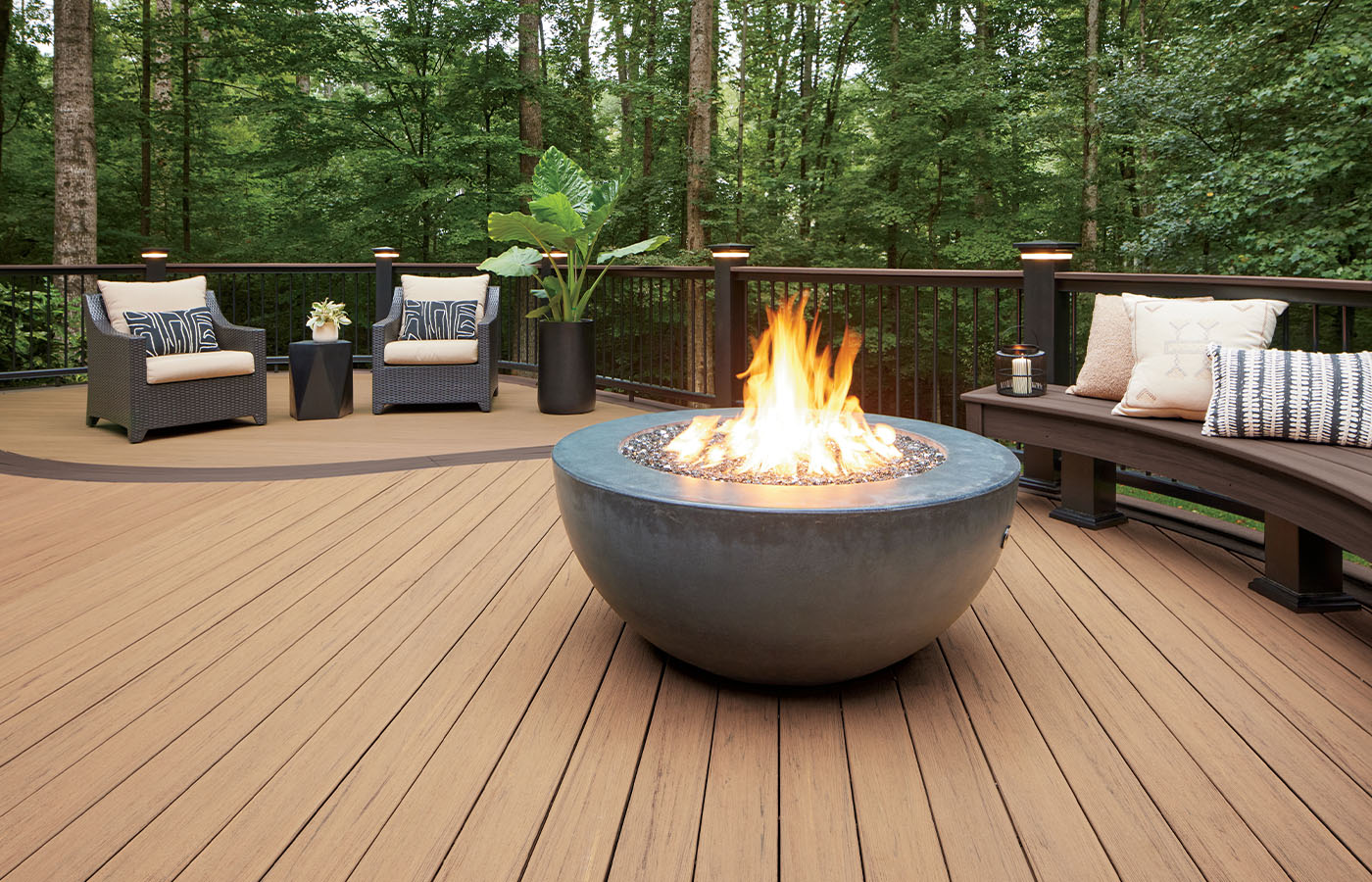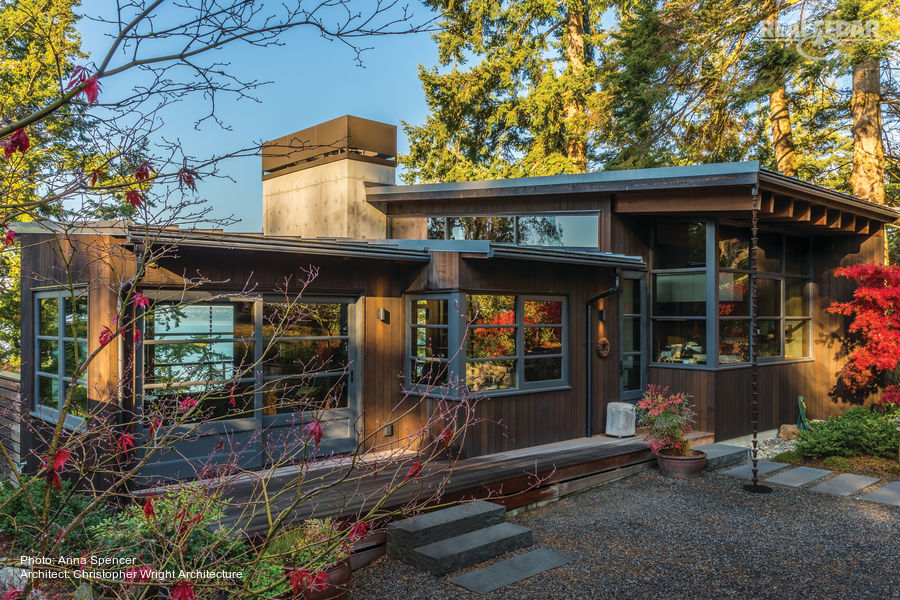
Building a deck can be fun for homeowners—and, in some cases, possibly a bit stressful. With a vast array of materials, colors, and profiles across both decking and railing, there’s a lot to choose from. Savvy dealers can help guide customers through the process by knowing what questions to ask and which products fit budgets, tastes, and more.
Considerations for Choosing Decking Materials
To walk a customer through the deck decision process, consider these factors:
Performance Expectations
Are the homeowners replacing a rotting wood deck or otherwise looking for a material that requires less maintenance? Step one will be pointing them toward an engineered product, like TimberTech® Advanced PVC or TimberTech® Composite Decking, which is moisture resistant, easy to clean, won’t splinter, and comes with a fade and stain limited warranty.
Budget
While composite decking tends to be more expensive than treated wood, there are a broad range of options to meet nearly any budget. For example, TimberTech® by AZEK® offers both capped polymer decking with its TimberTech® Advanced PVC and capped composite decking with its TimberTech® Composite decking lines. Both options offer a variety of collections with colors to suit any aesthetic.
Innovation
TimberTech® Composite decking innovates beyond traditional composite decking with realistic wood looks and a proprietary, protective polymer cap that locks out moisture and locks in rich color. From there, buyers can narrow down aesthetics and price points, such as the reclaimed wood look of the Reserve Collection or the subtle wood grain of the Terrain+ Collection®.
TimberTech® Advanced PVC decking delivers the company’s most realistic wood looks with unparalleled performance compared to anything else on the market. Advanced PVC decking also comes in several collections, including exotic hardwood looks in the Vintage Collection®, as well as with multi-width decking and porch options.
Patterns and Combinations
Depending on the size of the deck and its primary uses, customers may want to blend different colors and board sizes. For example, larger expanses can be broken up with boards in a different hue, picture-framed to add contrast, or installed with different widths or in a herringbone pattern to add visual interest. Inlays and borders can set off “rooms” of the deck, such as a conversation space or dining area.
Color
There’s no single best color for decking. The customer’s best option will depend on what they value most in terms of aesthetics, performance, and function. Consider these factors:
• Materials: Certain deck materials fade more than others. While wood will inevitably fade and discolor over time, engineered decking like TimberTech® Advanced PVC is designed to retain its color for the long haul.
• Landscaping: Landscaping will affect which deck colors go best with the yard. Lush green lawns pair well with rich brown decking, while a colorful garden may pair best with neutral gray decking.
• Sun exposure: What level of sun exposure will the deck receive? TimberTech® decking stays cooler to the touch and friendlier to bare feet than many other deck board products. While all decking products will get hot in the sun, the darker the decking color, the hotter it will feel; for hotter climates, consider choosing a lighter color.
• Interior flooring: Customers can either coordinate the colors of their decking with interior flooring for a seamless transition or can contrast them for a defined line.
• Home color: The most eye-catching homes are those that feature a color palette of a primary, secondary, and tertiary color, with primary being the most prominent color.
Considerations for Choosing Railing Materials
Homeowners can weigh similar characteristics for narrowing down deck railings and infill options.
Style
Even more so than the decking itself, the choice of railing really makes a style statement and can define the feel of the outdoor space.
For a modern aesthetic, cable railing offers a simple, sleek design for a minimalist look. Glass panels also have a contemporary appeal.
On the more traditional side, composite railings with natural grain textures can provide durable design and craftsmanship for a low-maintenance accent. They can also take advantage of additional composite features, like drink rails for added functionality.
For the timeless, sophisticated look of wrought iron without the weight and potential for rust, consider powder-coated aluminum, which can mimic the style at a lower cost and with less labor to install and maintain.
Views
Does the deck overlook sweeping mountain vistas, water, or other spectacular views? Clean rails and infill are essential to ensure an unobstructed line of sight. For these applications, cable railing, glass panels, or narrow aluminum balusters are ideal, depending on other factors.
Budget
If budgets are a concern, wood and composite railings are the more affordable option. Cable railing and glass panels typically have a higher price tag in keeping with their elevated styling.
Durability
Nearly all types of deck railings can withstand the elements if installed and maintained properly. Still, composite, PVC, and powder-coated aluminum railings are especially durable for coastal areas and other places where moisture is a big concern. For PVC, look for railings with an aluminum core, such as TimberTech® PVC railings, for added durability versus hollow vinyl options.
Maintenance
Like the decking itself, different railings require different levels of maintenance. Wood railings will need re-painting and staining while composites are much lower maintenance, requiring just occasional cleaning or debris removal. Metals also will require occasional cleaning. Glass panels can be prone to streaks, fingerprints, and dog noseprints that will need to be cleaned on a regular basis
Safety
Buyers should check local laws and regulations for any restrictions on railing and infill style as it pertains to safety. For example, horizontal options like cable railing and horizontal balusters provide a “ladder” for children to climb; for homes with kids, vertical options may be the safer bet. Glass panels with a gapless design are an option to provide a safe, solid barrier. Also be sure to follow code requirements for width between balusters.
Endless Options
For homeowners, choosing TimberTech® for their outdoor oasis brings a broad range of options while delivering reassurance on performance and fire resistance. Within these options are the material, color, style, price, and durability to meet the needs of nearly any outdoor living project.
Speak with your Weyerhaeuser rep today to explore custom solutions for your customer’s unique project needs.


